HLTH 7103 Report: Investigating Diabetes in New Zealand's Population
VerifiedAdded on 2023/05/23
|39
|3581
|279
Report
AI Summary
This report presents a comprehensive study on diabetes, focusing on its prevalence and related lifestyle factors within the New Zealand population. The study aims to investigate the link between lifestyle choices, specifically physical activity and dietary intake, and the onset of diabetes among individuals aged 35-60. The research employs a quantitative and exploratory design, utilizing questionnaires like the Global Physical Activity Questionnaire and Eating Habits Questionnaire to gather data from 100 Kiwi respondents. The report outlines the methodology, including ethical considerations, and discusses key practice issues such as health inequalities, cost barriers to healthcare, and lack of awareness. The study also includes a research proposal with specific research questions and aims to provide insights into the association between lifestyle and diabetes, potentially informing strategies for mitigating the condition. The report also provides an overview of the global and New Zealand context of diabetes, including types, prevalence rates, and at-risk populations such as Māori and Pacific Islanders.

Name of the Student:
Name of the University:
‘Diabetes’-Silent disorder that
causes health damage
Name of the University:
‘Diabetes’-Silent disorder that
causes health damage
Paraphrase This Document
Need a fresh take? Get an instant paraphrase of this document with our AI Paraphraser
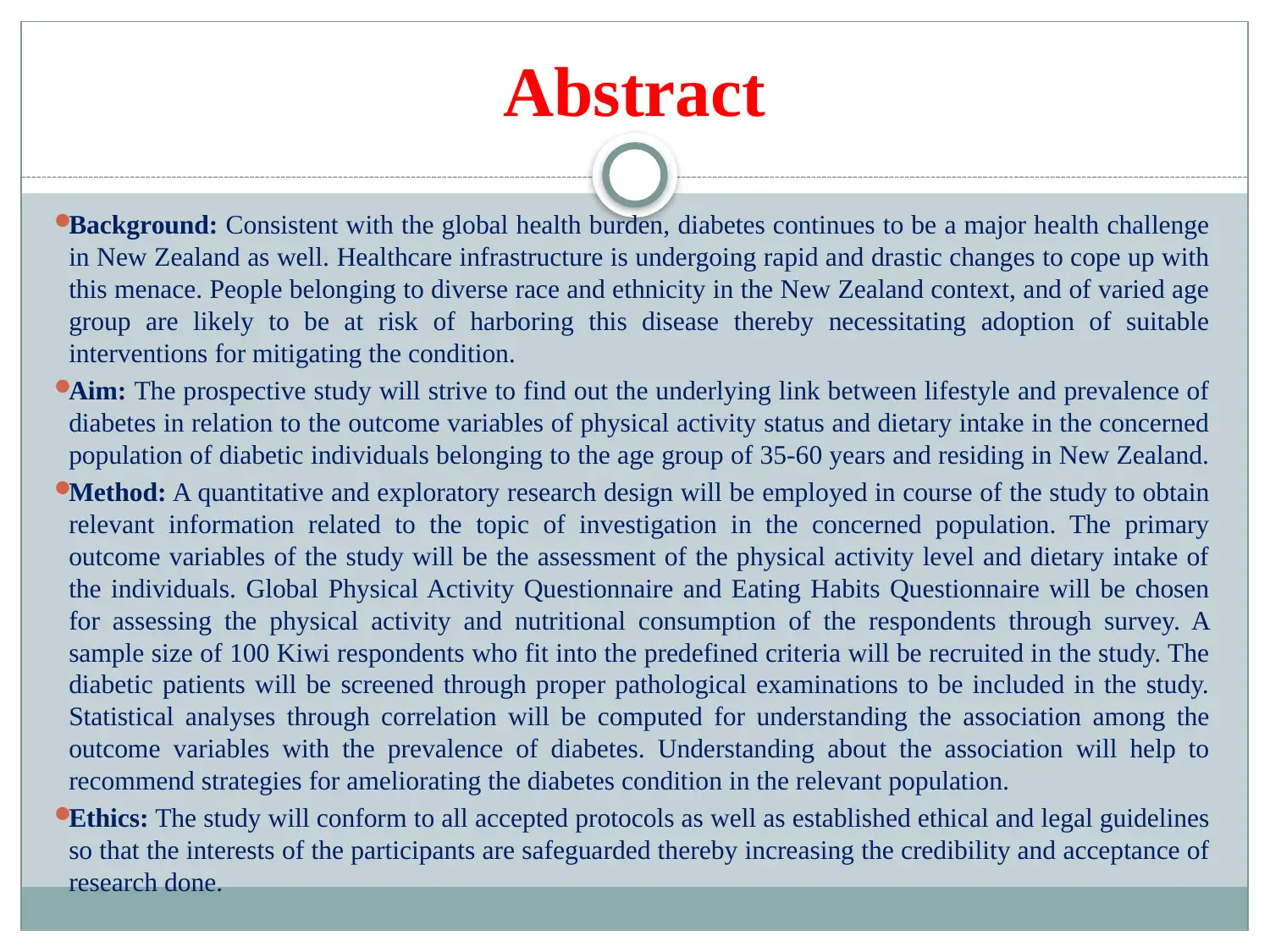
Abstract
Background: Consistent with the global health burden, diabetes continues to be a major health challenge
in New Zealand as well. Healthcare infrastructure is undergoing rapid and drastic changes to cope up with
this menace. People belonging to diverse race and ethnicity in the New Zealand context, and of varied age
group are likely to be at risk of harboring this disease thereby necessitating adoption of suitable
interventions for mitigating the condition.
Aim: The prospective study will strive to find out the underlying link between lifestyle and prevalence of
diabetes in relation to the outcome variables of physical activity status and dietary intake in the concerned
population of diabetic individuals belonging to the age group of 35-60 years and residing in New Zealand.
Method: A quantitative and exploratory research design will be employed in course of the study to obtain
relevant information related to the topic of investigation in the concerned population. The primary
outcome variables of the study will be the assessment of the physical activity level and dietary intake of
the individuals. Global Physical Activity Questionnaire and Eating Habits Questionnaire will be chosen
for assessing the physical activity and nutritional consumption of the respondents through survey. A
sample size of 100 Kiwi respondents who fit into the predefined criteria will be recruited in the study. The
diabetic patients will be screened through proper pathological examinations to be included in the study.
Statistical analyses through correlation will be computed for understanding the association among the
outcome variables with the prevalence of diabetes. Understanding about the association will help to
recommend strategies for ameliorating the diabetes condition in the relevant population.
Ethics: The study will conform to all accepted protocols as well as established ethical and legal guidelines
so that the interests of the participants are safeguarded thereby increasing the credibility and acceptance of
research done.
Background: Consistent with the global health burden, diabetes continues to be a major health challenge
in New Zealand as well. Healthcare infrastructure is undergoing rapid and drastic changes to cope up with
this menace. People belonging to diverse race and ethnicity in the New Zealand context, and of varied age
group are likely to be at risk of harboring this disease thereby necessitating adoption of suitable
interventions for mitigating the condition.
Aim: The prospective study will strive to find out the underlying link between lifestyle and prevalence of
diabetes in relation to the outcome variables of physical activity status and dietary intake in the concerned
population of diabetic individuals belonging to the age group of 35-60 years and residing in New Zealand.
Method: A quantitative and exploratory research design will be employed in course of the study to obtain
relevant information related to the topic of investigation in the concerned population. The primary
outcome variables of the study will be the assessment of the physical activity level and dietary intake of
the individuals. Global Physical Activity Questionnaire and Eating Habits Questionnaire will be chosen
for assessing the physical activity and nutritional consumption of the respondents through survey. A
sample size of 100 Kiwi respondents who fit into the predefined criteria will be recruited in the study. The
diabetic patients will be screened through proper pathological examinations to be included in the study.
Statistical analyses through correlation will be computed for understanding the association among the
outcome variables with the prevalence of diabetes. Understanding about the association will help to
recommend strategies for ameliorating the diabetes condition in the relevant population.
Ethics: The study will conform to all accepted protocols as well as established ethical and legal guidelines
so that the interests of the participants are safeguarded thereby increasing the credibility and acceptance of
research done.
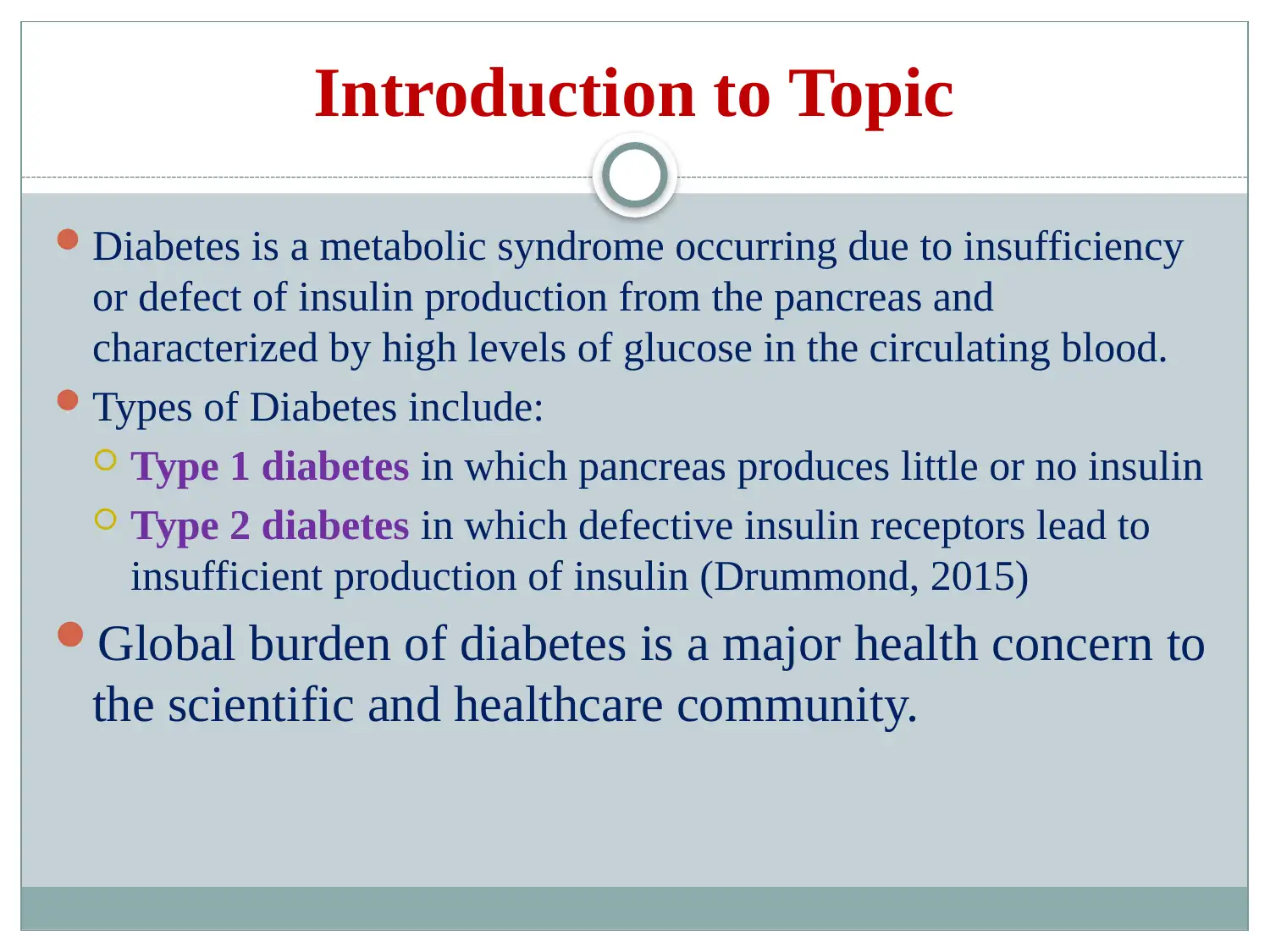
Introduction to Topic
Diabetes is a metabolic syndrome occurring due to insufficiency
or defect of insulin production from the pancreas and
characterized by high levels of glucose in the circulating blood.
Types of Diabetes include:
Type 1 diabetes in which pancreas produces little or no insulin
Type 2 diabetes in which defective insulin receptors lead to
insufficient production of insulin (Drummond, 2015)
Global burden of diabetes is a major health concern to
the scientific and healthcare community.
Diabetes is a metabolic syndrome occurring due to insufficiency
or defect of insulin production from the pancreas and
characterized by high levels of glucose in the circulating blood.
Types of Diabetes include:
Type 1 diabetes in which pancreas produces little or no insulin
Type 2 diabetes in which defective insulin receptors lead to
insufficient production of insulin (Drummond, 2015)
Global burden of diabetes is a major health concern to
the scientific and healthcare community.
⊘ This is a preview!⊘
Do you want full access?
Subscribe today to unlock all pages.

Trusted by 1+ million students worldwide
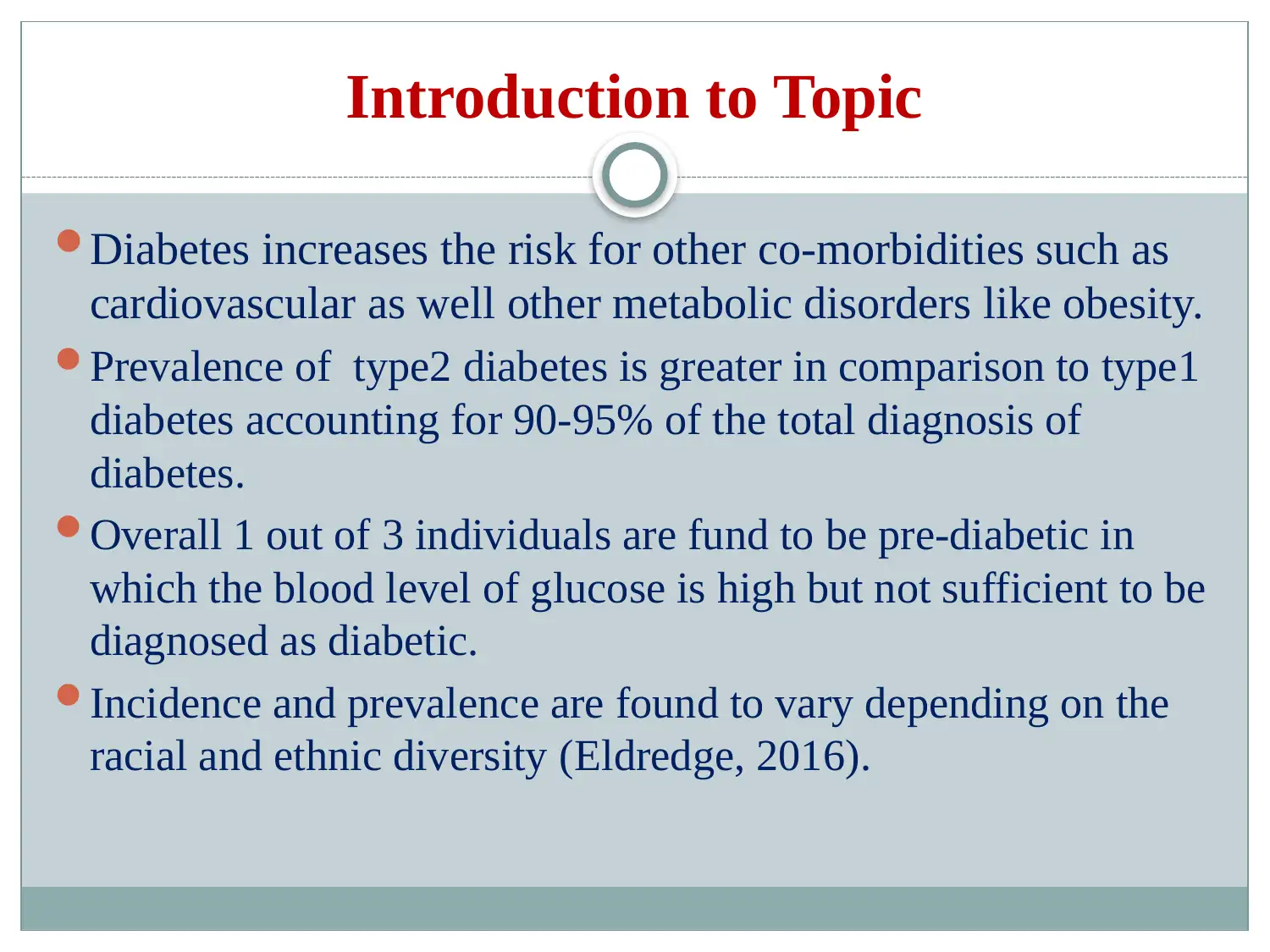
Introduction to Topic
Diabetes increases the risk for other co-morbidities such as
cardiovascular as well other metabolic disorders like obesity.
Prevalence of type2 diabetes is greater in comparison to type1
diabetes accounting for 90-95% of the total diagnosis of
diabetes.
Overall 1 out of 3 individuals are fund to be pre-diabetic in
which the blood level of glucose is high but not sufficient to be
diagnosed as diabetic.
Incidence and prevalence are found to vary depending on the
racial and ethnic diversity (Eldredge, 2016).
Diabetes increases the risk for other co-morbidities such as
cardiovascular as well other metabolic disorders like obesity.
Prevalence of type2 diabetes is greater in comparison to type1
diabetes accounting for 90-95% of the total diagnosis of
diabetes.
Overall 1 out of 3 individuals are fund to be pre-diabetic in
which the blood level of glucose is high but not sufficient to be
diagnosed as diabetic.
Incidence and prevalence are found to vary depending on the
racial and ethnic diversity (Eldredge, 2016).
Paraphrase This Document
Need a fresh take? Get an instant paraphrase of this document with our AI Paraphraser
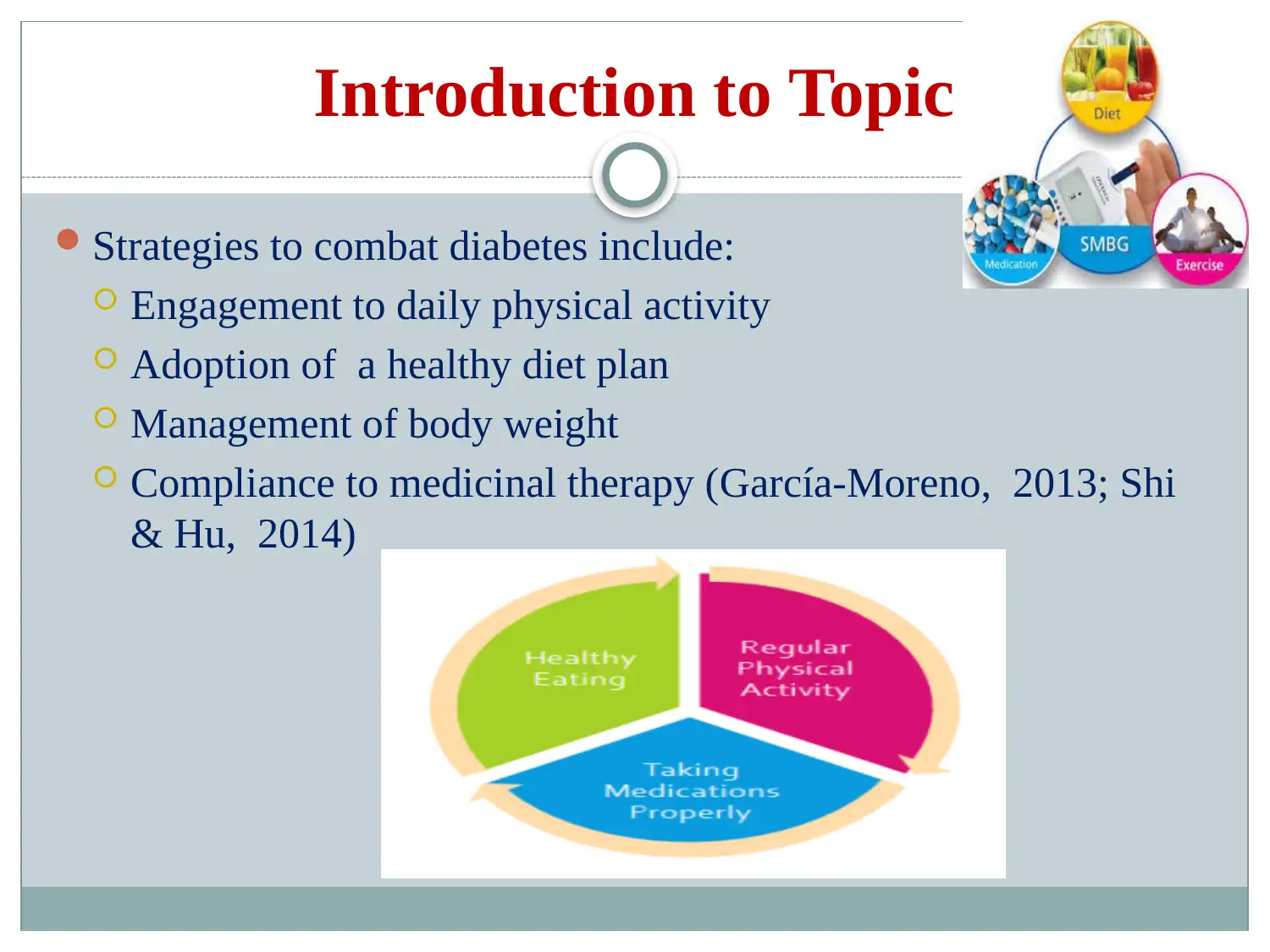
Introduction to Topic
Strategies to combat diabetes include:
Engagement to daily physical activity
Adoption of a healthy diet plan
Management of body weight
Compliance to medicinal therapy (García-Moreno, 2013; Shi
& Hu, 2014)
Strategies to combat diabetes include:
Engagement to daily physical activity
Adoption of a healthy diet plan
Management of body weight
Compliance to medicinal therapy (García-Moreno, 2013; Shi
& Hu, 2014)
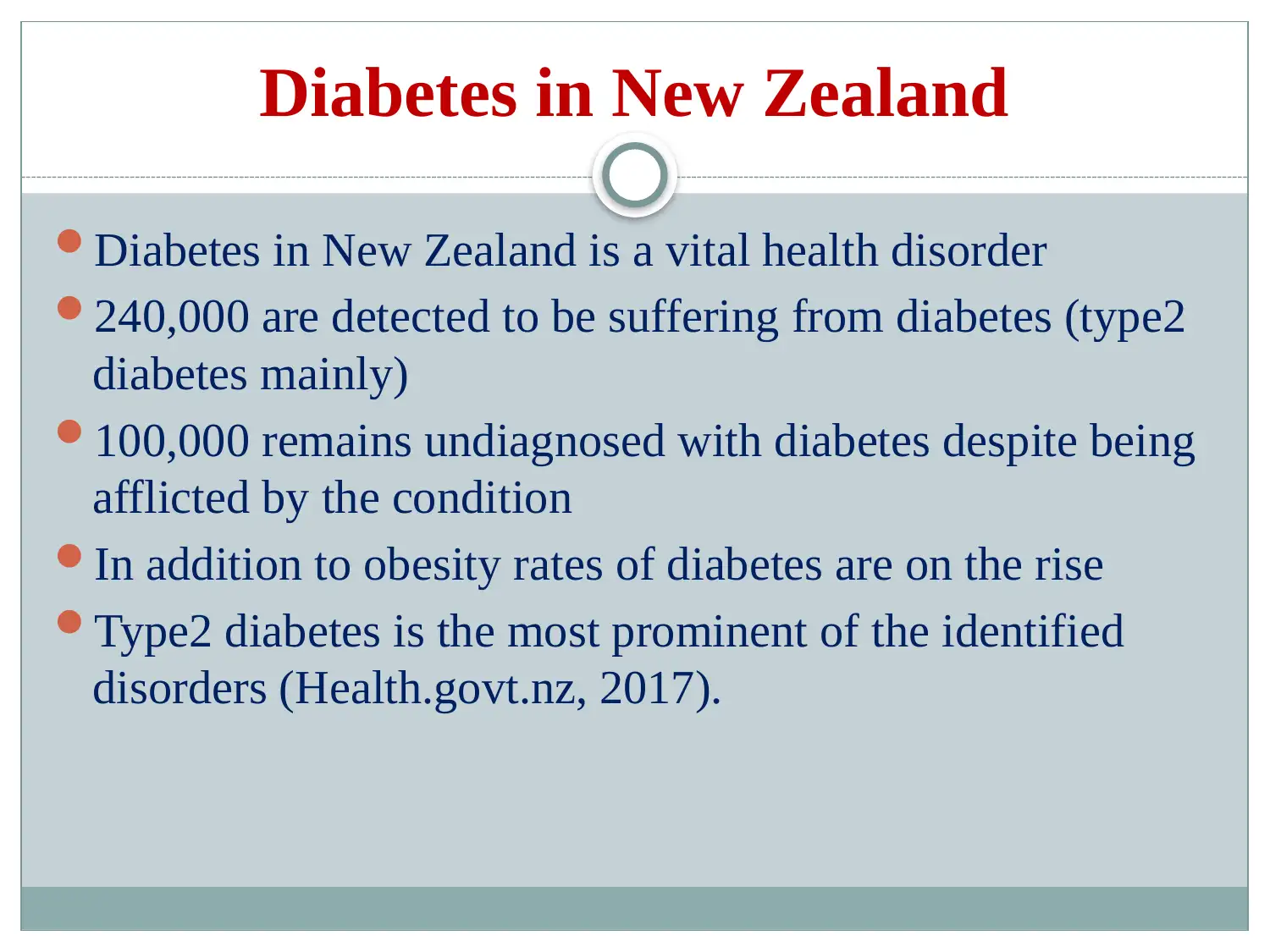
Diabetes in New Zealand
Diabetes in New Zealand is a vital health disorder
240,000 are detected to be suffering from diabetes (type2
diabetes mainly)
100,000 remains undiagnosed with diabetes despite being
afflicted by the condition
In addition to obesity rates of diabetes are on the rise
Type2 diabetes is the most prominent of the identified
disorders (Health.govt.nz, 2017).
Diabetes in New Zealand is a vital health disorder
240,000 are detected to be suffering from diabetes (type2
diabetes mainly)
100,000 remains undiagnosed with diabetes despite being
afflicted by the condition
In addition to obesity rates of diabetes are on the rise
Type2 diabetes is the most prominent of the identified
disorders (Health.govt.nz, 2017).
⊘ This is a preview!⊘
Do you want full access?
Subscribe today to unlock all pages.

Trusted by 1+ million students worldwide
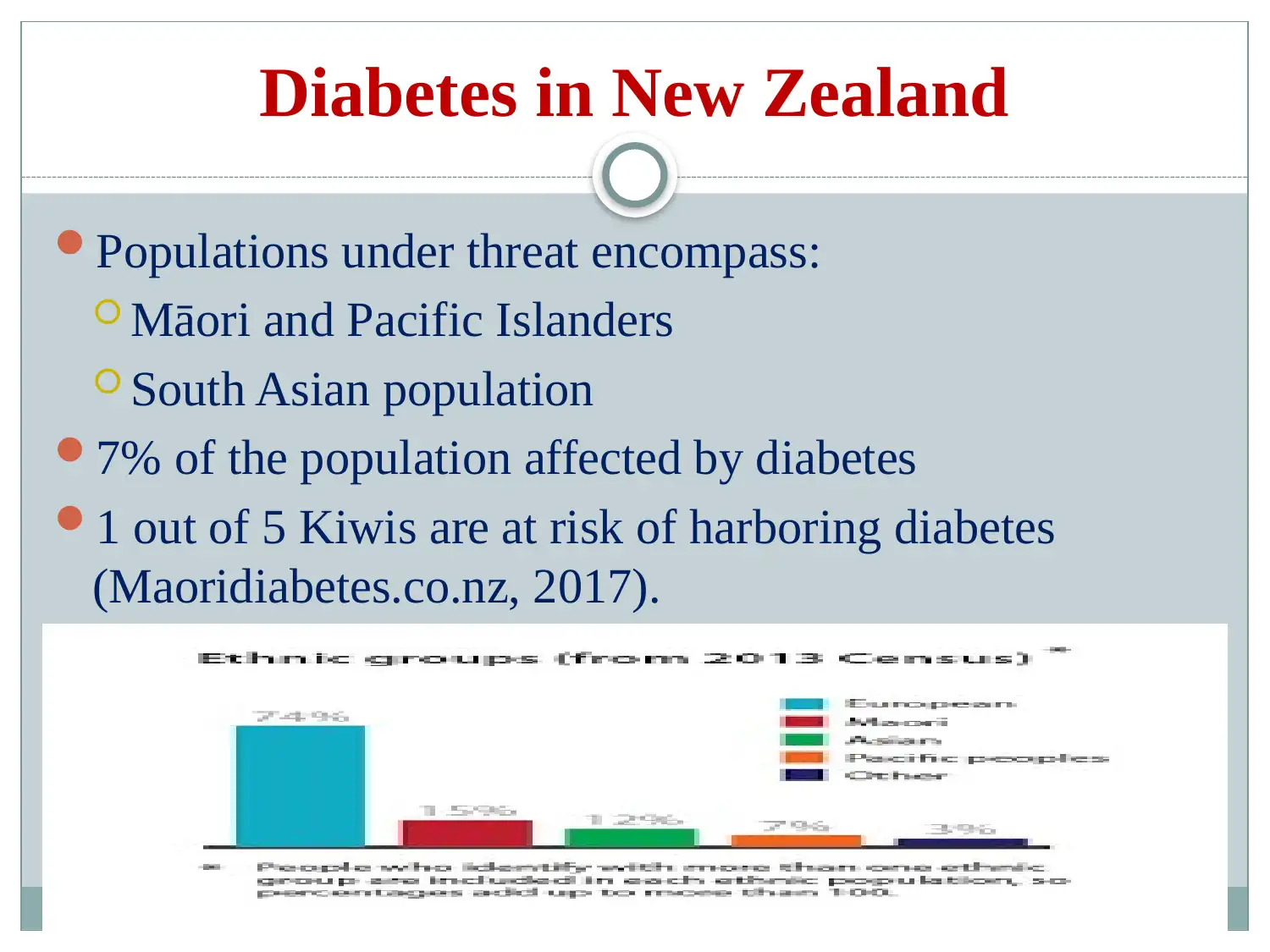
Diabetes in New Zealand
Populations under threat encompass:
Māori and Pacific Islanders
South Asian population
7% of the population affected by diabetes
1 out of 5 Kiwis are at risk of harboring diabetes
(Maoridiabetes.co.nz, 2017).
Populations under threat encompass:
Māori and Pacific Islanders
South Asian population
7% of the population affected by diabetes
1 out of 5 Kiwis are at risk of harboring diabetes
(Maoridiabetes.co.nz, 2017).
Paraphrase This Document
Need a fresh take? Get an instant paraphrase of this document with our AI Paraphraser
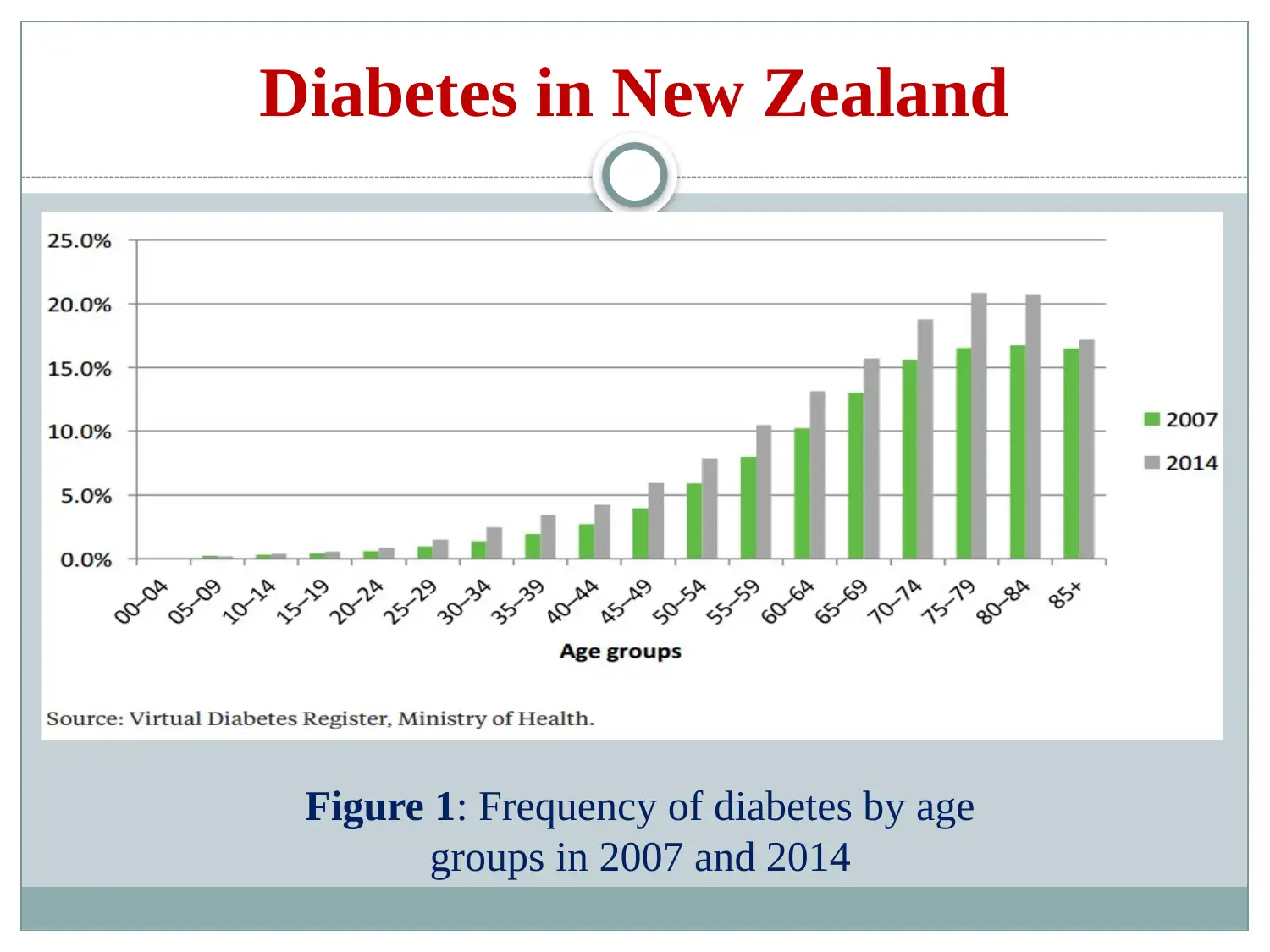
Diabetes in New Zealand
Figure 1: Frequency of diabetes by age
groups in 2007 and 2014
Figure 1: Frequency of diabetes by age
groups in 2007 and 2014
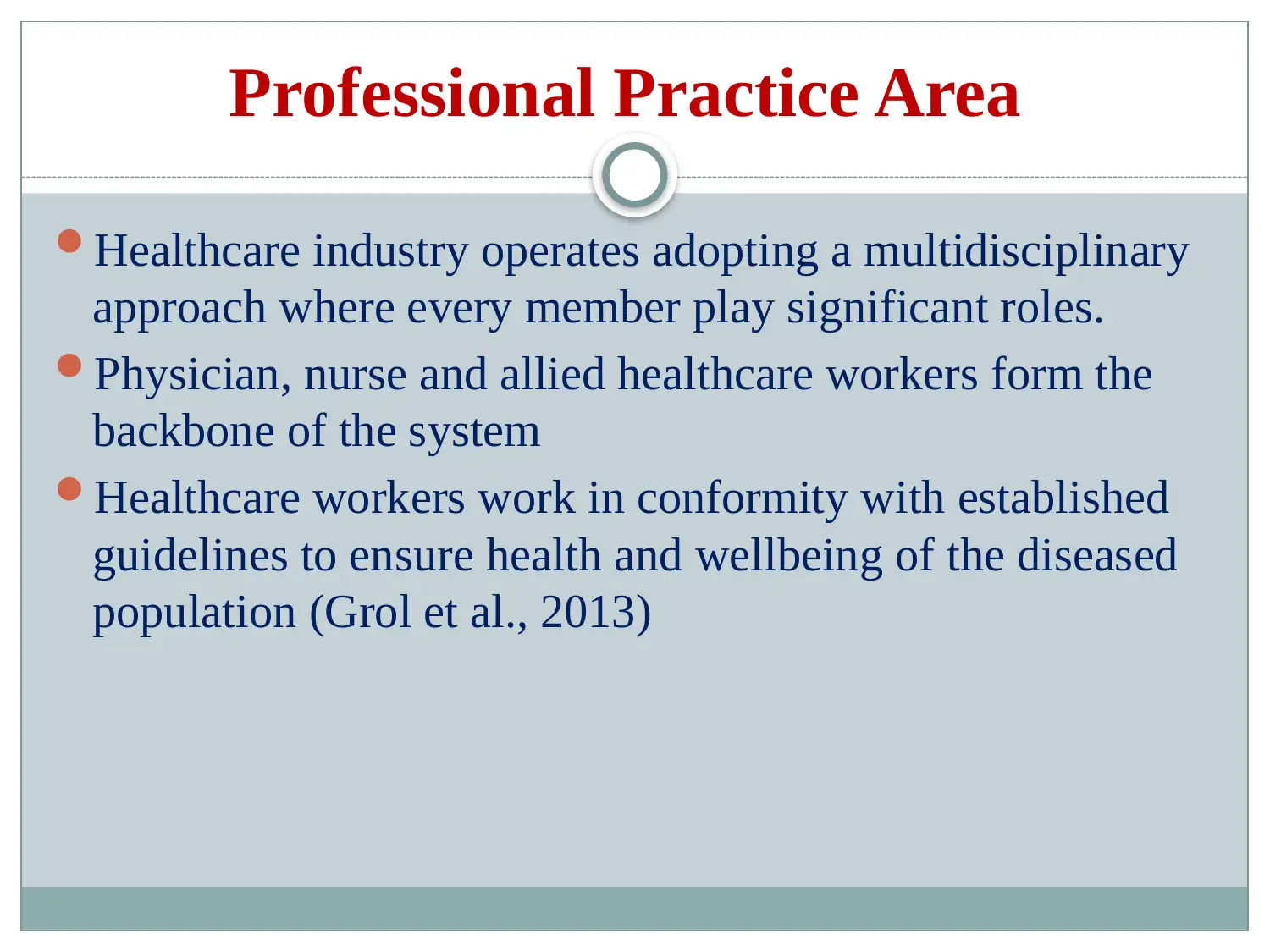
Professional Practice Area
Healthcare industry operates adopting a multidisciplinary
approach where every member play significant roles.
Physician, nurse and allied healthcare workers form the
backbone of the system
Healthcare workers work in conformity with established
guidelines to ensure health and wellbeing of the diseased
population (Grol et al., 2013)
Healthcare industry operates adopting a multidisciplinary
approach where every member play significant roles.
Physician, nurse and allied healthcare workers form the
backbone of the system
Healthcare workers work in conformity with established
guidelines to ensure health and wellbeing of the diseased
population (Grol et al., 2013)
⊘ This is a preview!⊘
Do you want full access?
Subscribe today to unlock all pages.

Trusted by 1+ million students worldwide
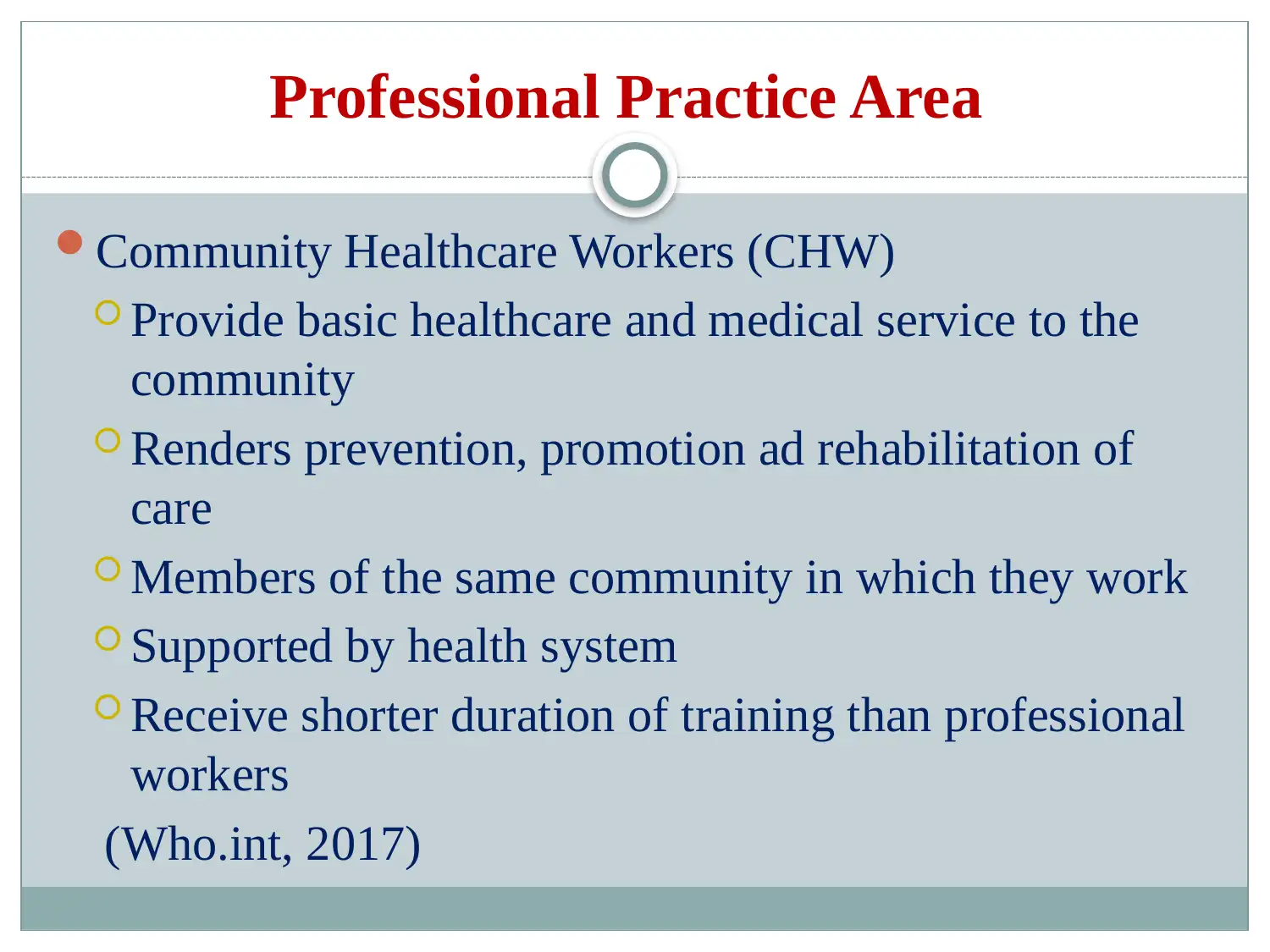
Professional Practice Area
Community Healthcare Workers (CHW)
Provide basic healthcare and medical service to the
community
Renders prevention, promotion ad rehabilitation of
care
Members of the same community in which they work
Supported by health system
Receive shorter duration of training than professional
workers
(Who.int, 2017)
Community Healthcare Workers (CHW)
Provide basic healthcare and medical service to the
community
Renders prevention, promotion ad rehabilitation of
care
Members of the same community in which they work
Supported by health system
Receive shorter duration of training than professional
workers
(Who.int, 2017)
Paraphrase This Document
Need a fresh take? Get an instant paraphrase of this document with our AI Paraphraser
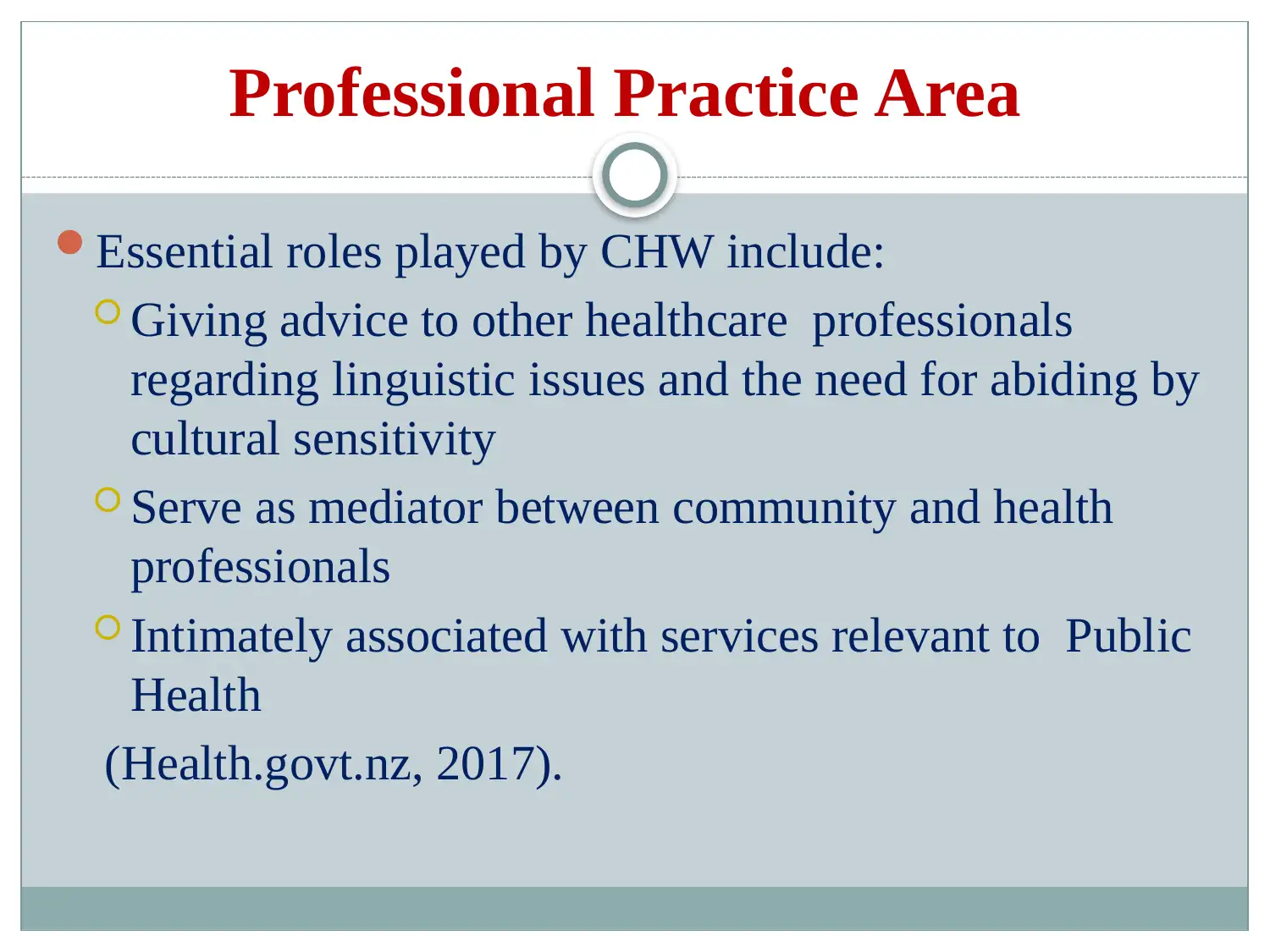
Professional Practice Area
Essential roles played by CHW include:
Giving advice to other healthcare professionals
regarding linguistic issues and the need for abiding by
cultural sensitivity
Serve as mediator between community and health
professionals
Intimately associated with services relevant to Public
Health
(Health.govt.nz, 2017).
Essential roles played by CHW include:
Giving advice to other healthcare professionals
regarding linguistic issues and the need for abiding by
cultural sensitivity
Serve as mediator between community and health
professionals
Intimately associated with services relevant to Public
Health
(Health.govt.nz, 2017).
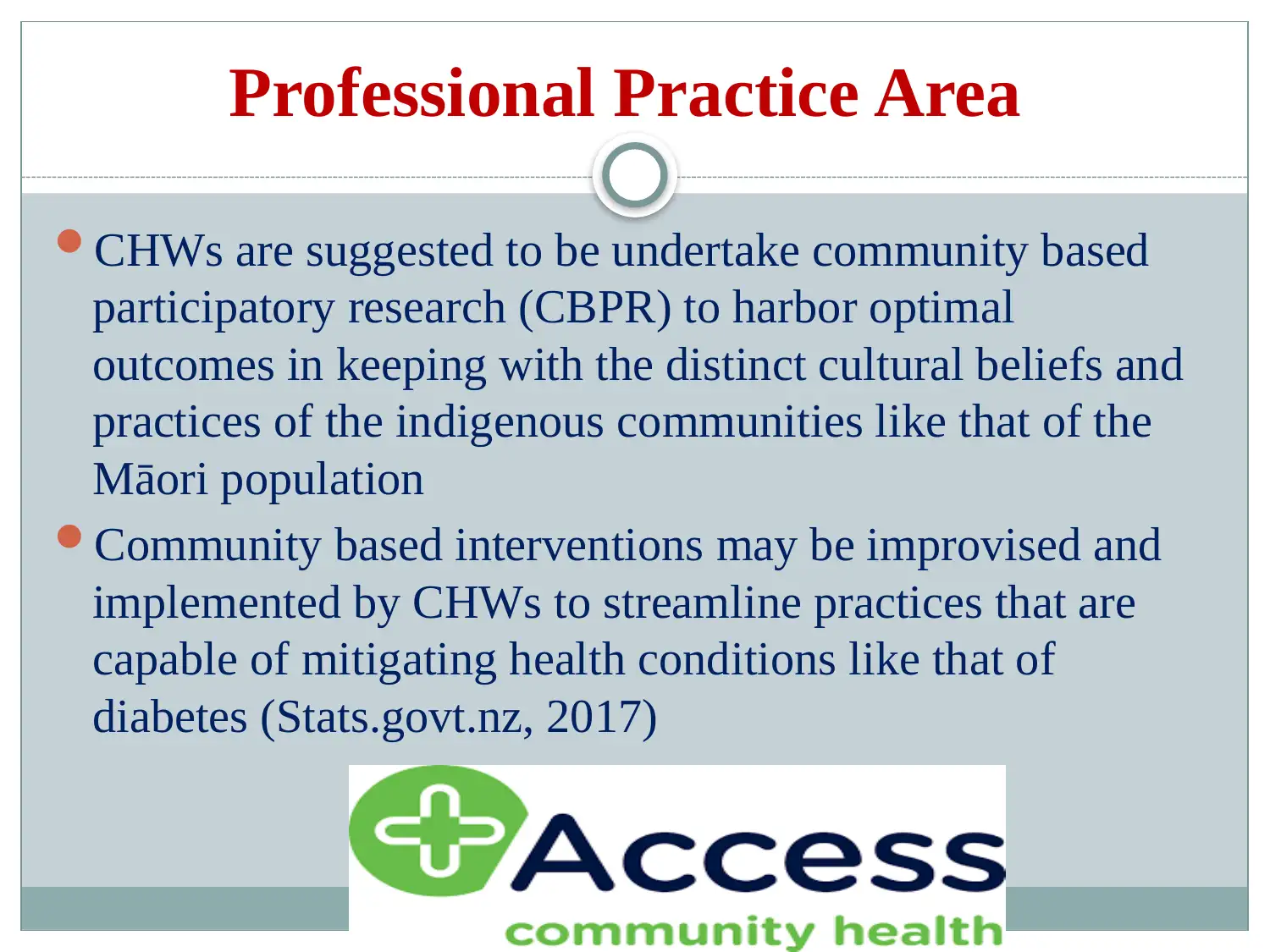
Professional Practice Area
CHWs are suggested to be undertake community based
participatory research (CBPR) to harbor optimal
outcomes in keeping with the distinct cultural beliefs and
practices of the indigenous communities like that of the
Māori population
Community based interventions may be improvised and
implemented by CHWs to streamline practices that are
capable of mitigating health conditions like that of
diabetes (Stats.govt.nz, 2017)
CHWs are suggested to be undertake community based
participatory research (CBPR) to harbor optimal
outcomes in keeping with the distinct cultural beliefs and
practices of the indigenous communities like that of the
Māori population
Community based interventions may be improvised and
implemented by CHWs to streamline practices that are
capable of mitigating health conditions like that of
diabetes (Stats.govt.nz, 2017)
⊘ This is a preview!⊘
Do you want full access?
Subscribe today to unlock all pages.

Trusted by 1+ million students worldwide
1 out of 39
Related Documents
Your All-in-One AI-Powered Toolkit for Academic Success.
+13062052269
info@desklib.com
Available 24*7 on WhatsApp / Email
![[object Object]](/_next/static/media/star-bottom.7253800d.svg)
Unlock your academic potential
Copyright © 2020–2025 A2Z Services. All Rights Reserved. Developed and managed by ZUCOL.





